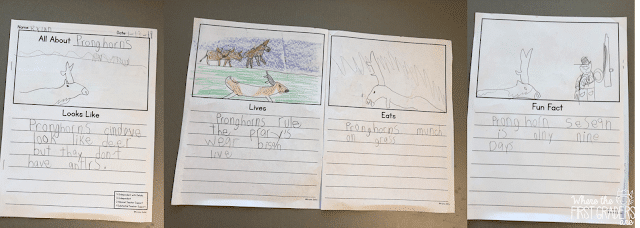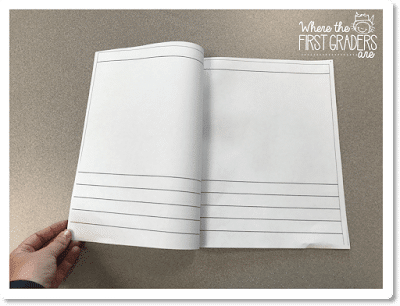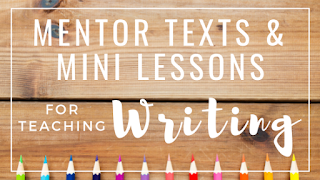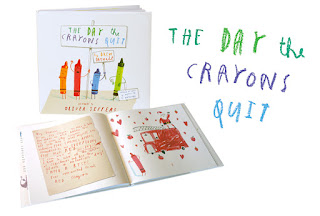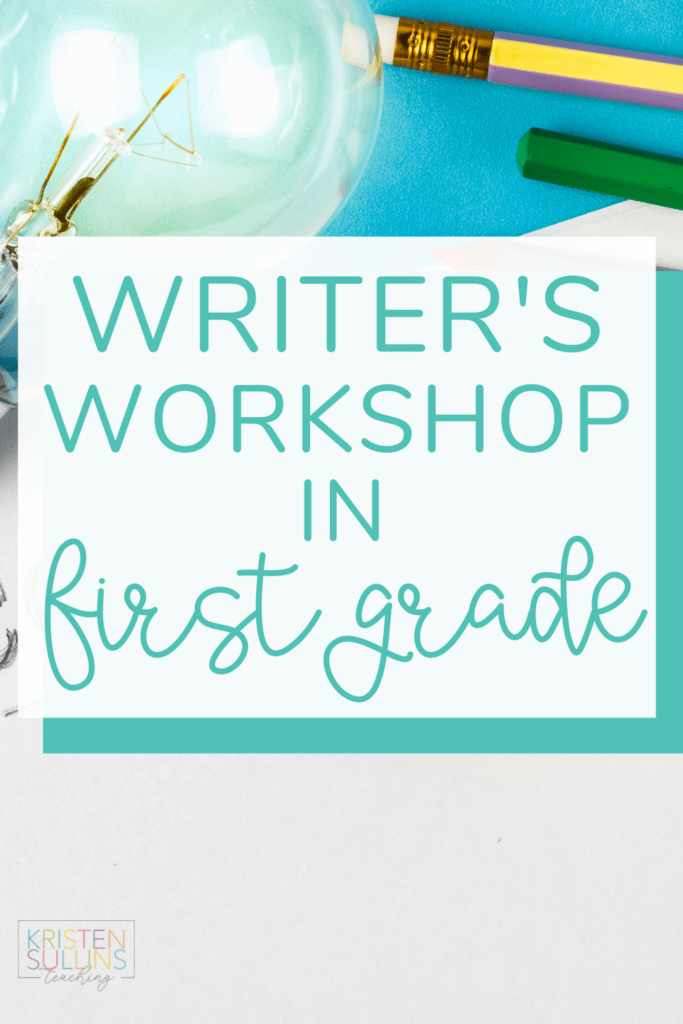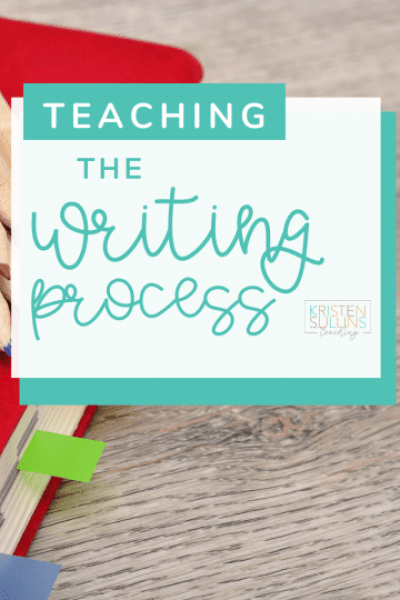The Writing Process is an essential part of your First Grade writing time.
It is so important for students to know how to plan, write, edit and revise a story of their own creation.
So often, we like to control the topic of our student's writing, but giving students CHOICE and teaching them how to be independent writers should be our #1 goal of teaching writing in first grade.
Yes, even your first graders can be independent and creative writers.
In this post, I'll be sharing my biggest secrets for teaching the writing process to my first grade students and walk you through the four steps of the writing process that we use in my own classroom: plan, sketch, write and details.
These steps have been slightly modified from Lucy Calkins Units of Writing and I have seen great success by using them with my students.

The Secret to the Writing Process… Focus on the Ideas
The key to making independent writers is to focus the student's ideas. Often times the first thing we want to fix is structure or spelling or conventions. I think as adult writers we often forget that the process of transferring ideas into writing is incredible hard for emerging writers. When grading state level writing assessments, the graders pay more attention to the quality o the content first, conventions and spelling are one of the last things that affect the student's overall score.
The greatest lesson you can teach a student is how to do things independently. At the end of the year, it doesn't matter how good their ideas are if they still rely on you to help get those great ideas on paper. Next year's teacher might not understand each student the way that you do, but if a student can independently get their ideas on paper then the gap between teachers will be significantly less.
The Big Picture of the Writing Process
Step 1: Plan
-tell your story to the teacher (for those who are really struggling)
Step 2: Sketch
One mistake that I made too many times was to make students write before they could draw. If you haven't read the book Patches Lost and Found, go read it now!
It is such a cute little story about a character who must write a story but doesn't know what to write about how. The character loves to draw, she draws tons and of pictures and her mom helps her turn her pictures into a story.
One very important thing that you must do is demonstrate HOW to sketch to your students. Sketching is a great way to help a student think about the different parts o the story and create an outline or each page. It is easily done with stick figures and outline of building, etc.
This is NOT the time to be adding details or to color, it is simply to help students create an outline of their story.
Step 3: Write
Like I said before, you really want to focus on the student's ideas. You want to teach them how to get their ideas down on paper as fast as they can. Spelling and conventions will become a habit as they grow as writers.
Writing fluency is just as important as reading fluency but it is something that does not get talked about nearly enough!
I think it's also important to mention that you teaching writing skills in small steps. You can see an example of my writing station below.
I often use half page anchor charts or even small pieces of colored paper to help highlight the ONE skill a day that we teach.
We will talk about mini-lessons later on, but one thing I really want to emphasize is that you need to MODEL, MODEL, MODEL. Students need to see fluent writing and see the writing process so that they know what the strive for and they know what is expected of them. Modeling is not something that you should use only at the beginning of the year, it needs to be done every single day from August to May.
I model writing for my students every single day. It may not be a full four page booklet each time, a lot of times I give a one page example or go back and add a trade craft to something we have already written together.
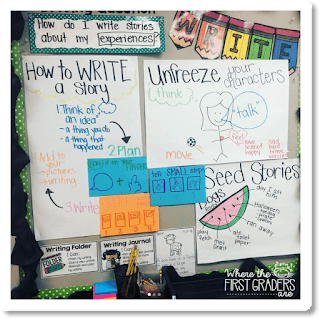
Step 4: Details
I love using the mentor text The Day the Crayons Quit for this lesson. A common motto in my classroom is to “keep your crayons and your teacher happy”.
What's Next?
So you've taught the process and now your students are writing and you really want to help them improve but you just aren't sure where to start?


